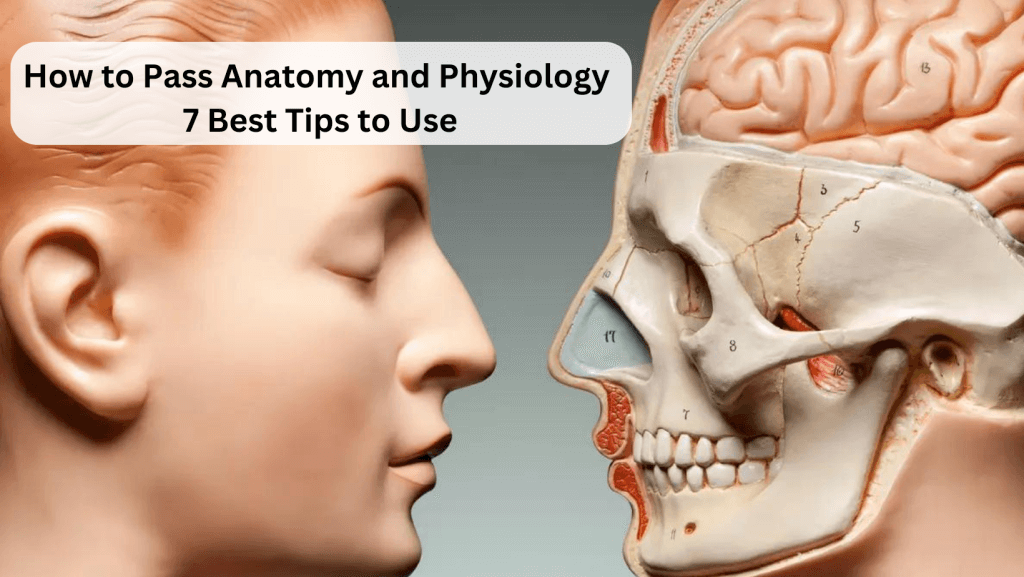If your dream is to become a registered nurse, then learning how to pass anatomy and physiology is an inevitable endeavor. However, passing this course requires memorizing certain anatomical terminology in different languages and a deep understanding of complex physiological processes, making it a grueling obstacle for many. Feeling intimidated by the complexities? Our nursing assignment professionals are here to help you overcome your fears and guide you on the path to becoming a certified nurse. They also help prospective nursing assignments, projects, and exams.
Table of contents
Anatomy and Physiology: What’s the Difference?
Anatomy and physiology are related biological disciplines taught together in many colleges. However, the two have a distinct focus in the study of organisms. Anatomy studies identity and body structure, while physiology focuses on how these parts relate and function. An atomist gathers information from living or dead organisms through dissection to study the internal structures. On the other hand, a physiologist seeks to understand the functions of tissues, organs, and cells derived from the organism. Essentially, anatomy comes first when studying the two topics as a single unit,
Anatomy and Physiology Courses
Typically, anatomy and psychology comprises the following course content
- Concepts of Biology
- Genetics
- Pathophysiology
- Honors General Biology
- Microbiology
- Anatomy and Physiology I & II
- Human Anatomy and Physiology
- Anatomy and Physiology for Pre-Hospital Healthcare
- Vertebrate Anatomy
- Vertebrate physiology
- Microbiology for the Health Sciences
- Ecology and Environmental Conservation
- General Botany
- General Zoology
Note that the above course content may vary depending on the college. Remember, you can also take anatomy and psychology as single courses. A degree program in anatomy includes physiology, microanatomy, gross anatomy, embryology, and neurobiology. On the other hand, a degree program in physiology has courses like cell biology, molecular biology, exercise physiology, and genetics.
Study Tips for Passing Anatomy and Physiology
Here are helpful study tips and tricks to help you study and pass anatomy and physiology courses.
Engage Deeply with The Course
Develop a robust study method, including thoroughly reviewing assigned textbook sections before attending lectures. Remember, anatomy and physiology use a lot of visuals. Study and understand images used in the textbook to enhance your comprehension.
Express Your Understanding of the Material in Your Own Words
According to one study by Scientific American, students learn and understand the material better if they take notes by hand instead of using a computer. Reframe information into your own words as you listen to lectures or as you read. These may include adding drawings or charts to your notes to help you remember the information more effectively.
Learn Greek and Latin Component of Terminologies
Most medical terms are coined from Greek or Latin words due to their medical roots in scientific medical vocabulary. Each term often comes with a prefix, suffix, or combination. You can break down terms into different parts easier to understand and memorize. For instance, the word acryosistisis comes from the following Greek terms:
- dákryon (tear)
- kýstis (sac)
- -itis (inflammation).
Learn to identify different components from as many as possible to help decode their meanings when used in the medical industry.
Break Down Information into Manageable Chunks
Anatomy and physiology involve memorizing a lot of information. This can be overwhelming with a proper memorization technique. A practical way to remember complex information is by grouping them into smaller sets. You can achieve this by organizing terms you want to remember in a specific pattern, such as the topic, the word’s sound, or the word’s first letter. Be creative and devise what works for you.
Leverage Mnemonic Devices
Mnemonics are systems or devices used to aid memory. These devices mostly relate to associations, patterns of ideas, or letters. Use rhyming mnemonics and acronyms to remember important yet challenging information you wish to retain long-term. For instance, the acronym to help you remember Brachial Plexis roots subdivision would be “Remember to Drink Cold Beer (Roots, Trunks, Divisions, Cords, and Branches). You can always create your own acronyms to remember important terms better.
Practice More
Practice more to recall information learned and strengthen connections in your brain for long-term knowledge retention. Use digital flashcard apps like Chegg or Quizlet to create stronger neural connections and remember words better.
Explore Online Study Options
Watch online video lessons on topics such as the nervous system, human circulatory system, chemical bonding, and more to reinforce information acquired in lass. Seek professional guidance from experienced assignment help professionals for practical knowledge on the subject.
How to Pass Anatomy and Physiology
Becoming a registered nurse takes dedication and a learning strategy. Complex and technical units and lack of enough time often hinder students from realizing their full potential. Contact our experienced nursing assignment professionals on how to pass anatomy and physiology using time-tested tricks.





Pingback: Is Anatomy and Physiology Hard? 7 Tips Pass in Nursing